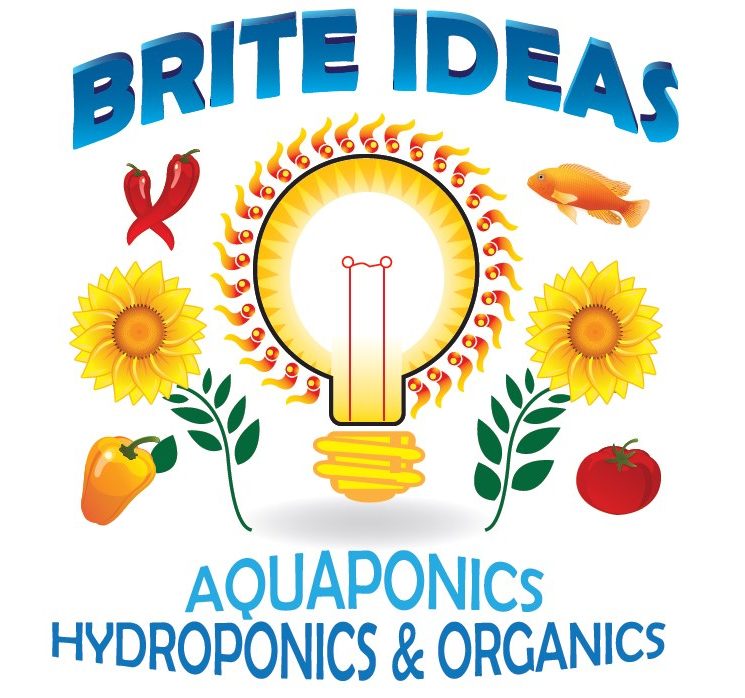There are three main types of hydroponic techniques that are currently employed, Media Bed, Deep Water or Raft, and NFT (Nutrient Film Technique). Each type has a variety of configurations that can be employed, but almost all Aquaponic systems are essentially based on one or a combination of these three types.
A media bed is an Aquaponic System that utilizes media such as expanded clay as a foundation for root growth. Water is pumped into a media filled grow bed and then allowed to flow back to the fish tank. This is a hydroponic growing method called Flood and Drain. This timed flow of water allows for the plants to have a consistent supply of nutrient rich water while maintaining high oxygen levels in the root zone.
As the water rises and falls throughout the media, fish waste becomes trapped and slowly settles to the bottom layers of the grow bed. The media filters the solids and colonizes bacteria on its’ surface area. This alleviates the need for a bio-filter or clarifier to be added to the system. As a media bed matures, worms may be added to help further break down solids and waste in the system into condensed slow released nutrients. This allows us to avoid cleaning the media in a balanced system.
Benefits of a Media Bed System:
>> Bio-filtration
>> Solids filtration
>> Plant support
>> A home for composting worms
>> Mineralization of solids
>> Ease of Use
A raft is an Aquaponic System based on a hydroponic growing method called Deep Water Culture or DWC. In a raft system, roots are grown directly in the water while the plant floats on the surface in a “raft”. The raft can be made from sheets of Styrofoam or suspended in a fixed structure. Oxygen is pumped into the system to allow for proper root health. The main benefit of growing in a raft is the water added to the system. More water allows for more stability by buffering temperature, pH, and nutrient load. Another benefit is that a raft is relatively inexpensive to set up without the added cost of media to fill the grow space.
The downside to the raft system is that there is not enough surface area for the beneficial bacteria to colonize. A bio-filter is necessary to convert toxic fish waste into healthy plant nutrients. Also, a clarifying filter is necessary to keep waste solids from building up on the roots and within the system. Creating a hybrid system by adding a raft to an existing media bed is a great way to avoid the use of a bio-filter or clarifier. The expanded clay in a media bed acts as a bio-filter and a solids remover.
Creating a hybrid system by adding a raft to an existing media bed is a great way to avoid the use of a bio-filter or clarifier. The expanded clay in a media bed acts as a bio-filter and a solids remover.
In deep water culture, plants roots are submerged in a highly oxygenated nutrient solution and little to no media is used. These systems require additional solids removal to prevent buildup. Depending on the size of the system, the surface area of the tanks and rafts used is usually sufficient for bacterial colonization and nitrogen conversion. Raft style Aquaponics was pioneered by the University of the Virgin Islands and is composed of tanks for the fish, a solids removal clarifier, a mechanical filter, degassing chamber, hydroponic rafts and a sump/base addition tank. The hydroponic troughs are typically 1’ deep by 4’ wide and can be up to 100’ long. Styrofoam sheets are floated on top of the filled troughs and plants are placed in net pots in the sheets and the roots are allowed to hang suspended in the nutrient solution. Since the roots are completely submerged, oxygenation is critical and air stones are placed every 2’-3’ down the channel. Also due to the lack of media for anchorage, only smaller plants are used unless some sort of support is added. Young plants are placed in the properly spaced holes in the beginning of the channel and harvested out of the end so that the Styrofoam sheets can be floated down and another one placed in at the start.
NFT is a hydroponic technique that delivers a thin film of nutrient solution down the bottom of a channel, where the plant roots spread out and filter the nutrients from the water. The thin film of solution allows the rest of the channel to be open to the air, which enables a high amount of oxygen availability for the roots. The channels or gutters have plants spaced according to size and do not require any media for the plants roots. This reduces to initial and future cost of supplies and plants are usually started in a rooting plug, where they are grown for a few weeks until sufficient root mass has developed and they are transplanted into the NFT channels. Since the water delivery lines are usually of a small diameter, they have a high susceptibility to clogging from debris and additional solids removal is needed to ensure the delivery of solution to the plant roots. Since there is no media for plant support or bacterial colonization, additional bio filtration and support may be needed.
A Hybrid Aquaponic System is the combination of a Media Bed and a Raft system. Both the Media Bed and the Raft system have advantages and disadvantages. When we combine the two, we capitalize on the assets of both styles and remove some of the disadvantages.
